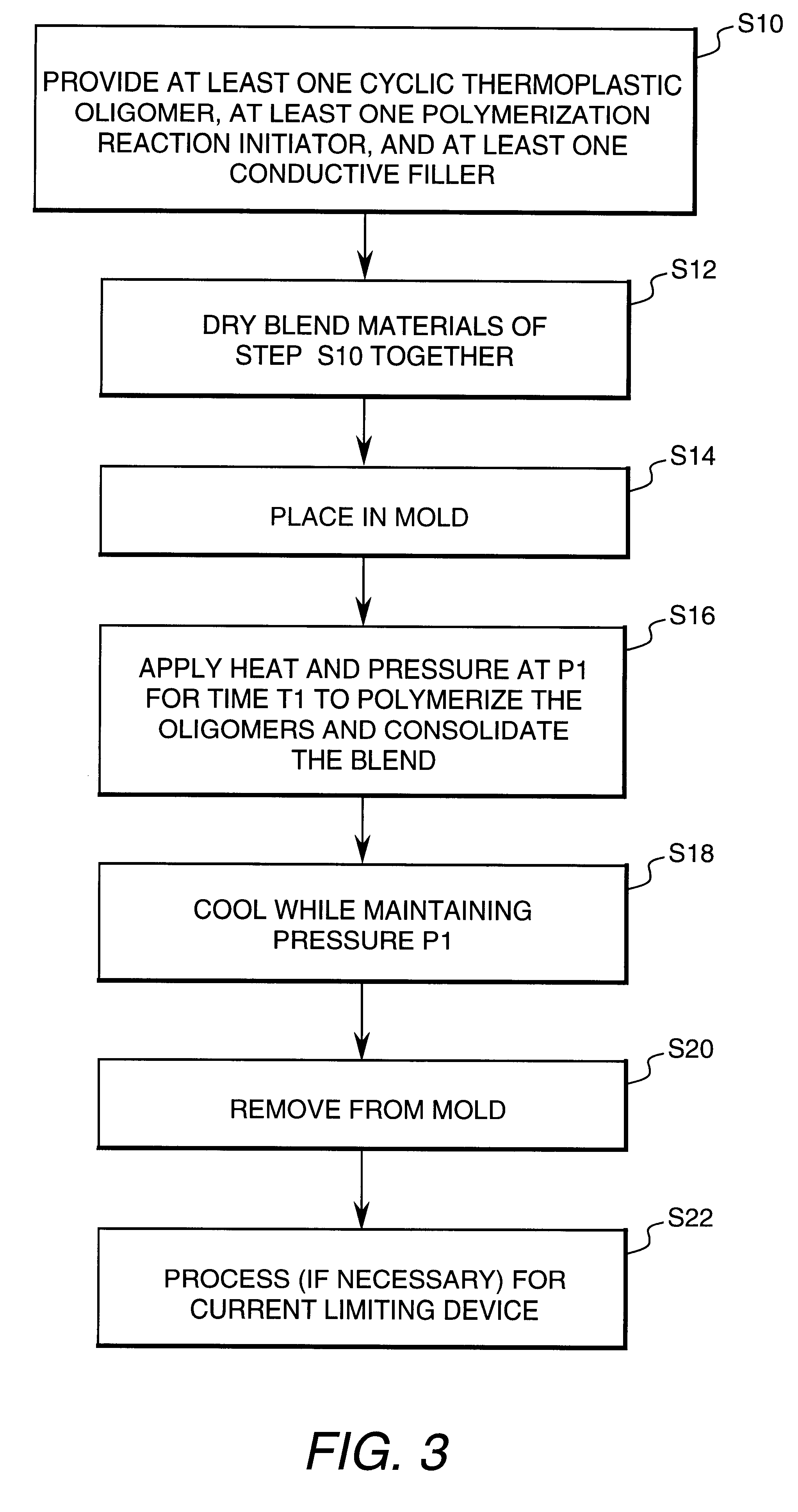Current limiting device with conductive composite material and method of manufacturing the conductive composite material and the current limiting device
a technology of current limiting device and conductive composite material, which is applied in the direction of non-conductive material with dispersed conductive material, non-metal conductor, conductor, etc., can solve the problems of thermosetting monomers not being able to meet the requirements of thermosetting monomers, thermosetting polymers are often brittle, and thermosetting polymers undergo substantial shrinkag
- Summary
- Abstract
- Description
- Claims
- Application Information
AI Technical Summary
Problems solved by technology
Method used
Image
Examples
Embodiment Construction
A current limiting device, as embodied by the invention, comprises an electrically conductive composite material positioned between electrodes, so that there is an inhomogeneous distribution of resistance throughout the current limiting device. The electrically conductive composite material comprises at least a conductive filler and at least one organic, preferably polymeric, binder matrix. The current limiting device, as embodied by the invention, further comprises means for exerting compressive pressure on the electrically conductive composite material of the current limiting device.
The current limiting device, as illustrated in FIG. 1, is embodied as a high current multiple use fast-acting current limiting device 1. In FIG. 1, the current limiting device 1, as embodied by the invention, comprises electrodes 3 and an electrically conductive composite material 5 with inhomogeneous distributions 7 of resistance structure under compressive pressure P. The electrically conductive comp...
PUM
 Login to View More
Login to View More Abstract
Description
Claims
Application Information
 Login to View More
Login to View More - R&D
- Intellectual Property
- Life Sciences
- Materials
- Tech Scout
- Unparalleled Data Quality
- Higher Quality Content
- 60% Fewer Hallucinations
Browse by: Latest US Patents, China's latest patents, Technical Efficacy Thesaurus, Application Domain, Technology Topic, Popular Technical Reports.
© 2025 PatSnap. All rights reserved.Legal|Privacy policy|Modern Slavery Act Transparency Statement|Sitemap|About US| Contact US: help@patsnap.com



